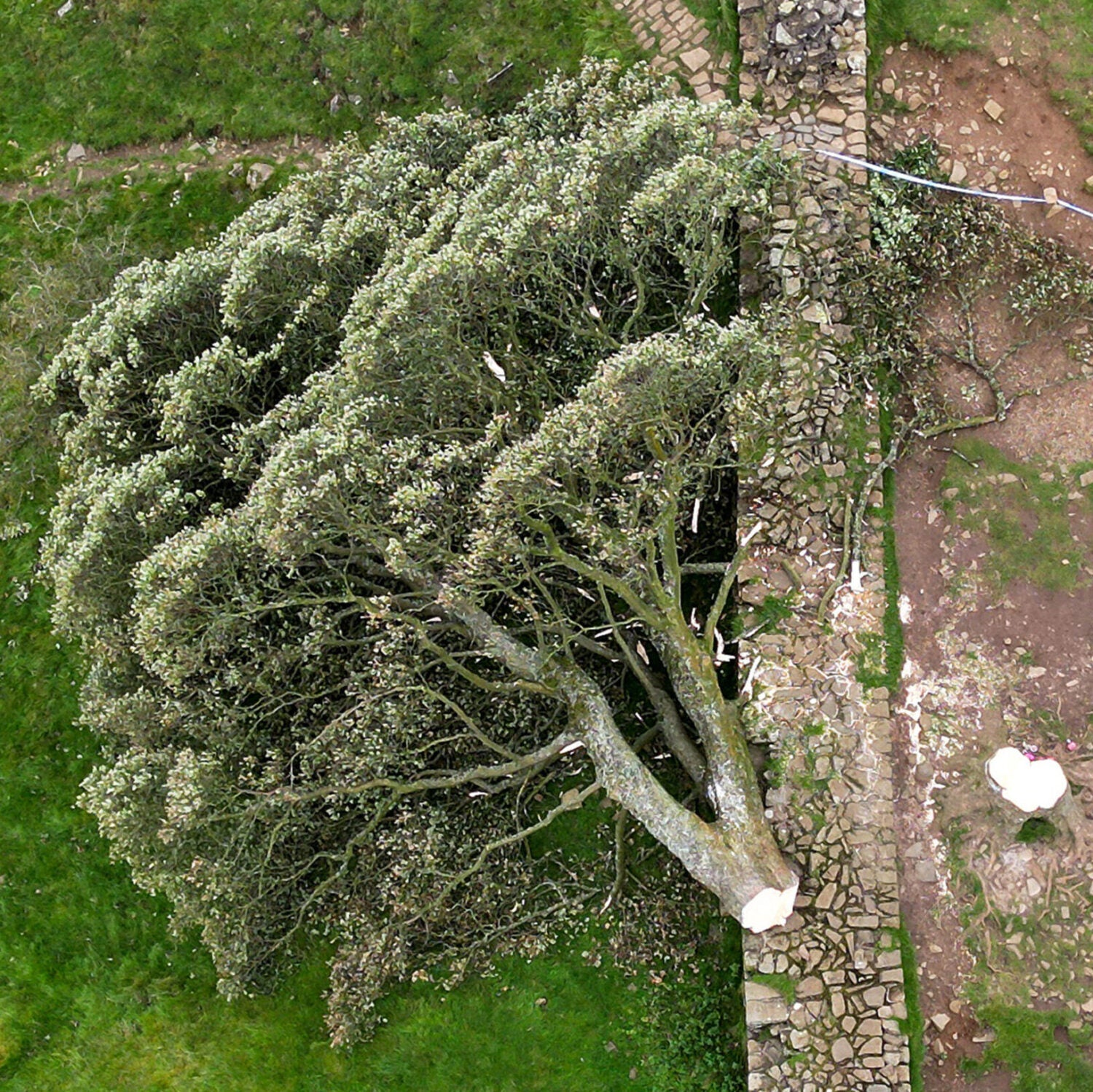For years, visitors to the United Kingdom’s Northumberland National Park would park their cars and walk 20 minutes over green hillsides to see one of the country’s most famous trees. Called Sycamore Gap, the tree was between 200 and 300 years old, and it grew in a dip between two hills, perfectly framed by the sloping earth. Its roots stretched through a small section of Hadrian’s Wall, a stone barrier built by the Roman Empire that’s now preserved as a UNESCO World Heritage site.
Now, visitors are greeted by a different view: The tree rests on its side, adjacent to a two-foot stump jutting out of the ground. The famous tree was cut down in the night on Thursday, September 28. Officials have arrested on suspicion of having committed the act, but no one has publicly shared what might have motivated him to fell the ancient giant.
The Sycamore Gap has already been renamed on Google Maps as , but some still hold out hope that the tree is not entirely lost. Andrew Poad, who manages the land where the sycamore grew, , “It’s a very healthy tree, […] because of the condition of the stump, it may well regrow a coppice from the stump, […] and then we keep the tree.”
Other officials thought it might be possible to regrow a semblance of the demolished tree by coppicing, or cultivating new shoots from the stump. Despite these possible outcomes, the tree as people know it has been lost forever. Mark Feather, who works at an organization that tends to the tree, it would “take a few years to develop into even a small tree and around 150 to 200 years before it is anywhere close to what we have lost.”
“Once a tree of this age has gone, the sad truth is you can’t replace them within any visible timeframe. It takes centuries,” Feather said.

Sycamore Gap looked like the tree a kindergartener would draw, a green sphere of foliage centered over a straight brown trunk. But the art and emotion it inspired is far from childish. The sycamore was a tree of many names, winner of a regional contest in 2016, and immortalized in photos, paintings, songs, writing, and film. A poem explores the relationship between wall, tree, and longevity; borrows it as a setting—and title—for a fictional murder-mystery. Scenes of the 1991 film Robin Hood: Prince of Thieves, starring Kevin Costner, were shot at the sycamore, which is also sometimes known as the Robin Hood tree.
Some cultivated personal connections to the felled tree. Nature writer Robert McFarlane said in a radio interview that he sees the tree being cut down as “part of a piece with a much broader hostile environment towards the living world in this country. It was a tree that ashes were scattered under, marriages were made under, and it was a shelter for tired walkers.”
The mayor of nearby town North of Tyne, Jamie Driscoll, visited the site and he wasn’t able to articulate his rage. “People have had their ashes scattered there. People have proposed there. I’ve picnicked there with my wife and kids. It’s part of our collective soul,” said Driscoll. Another photographer that he’d proposed to his wife under the sycamore’s branches.
An investigation of the suspected culprit is ongoing, but no matter his reasons for cutting down the beloved tree, the fact remains that it’s been reduced to a stump. People are already visiting it, taking in the shocking and heartbreaking new horizon.


